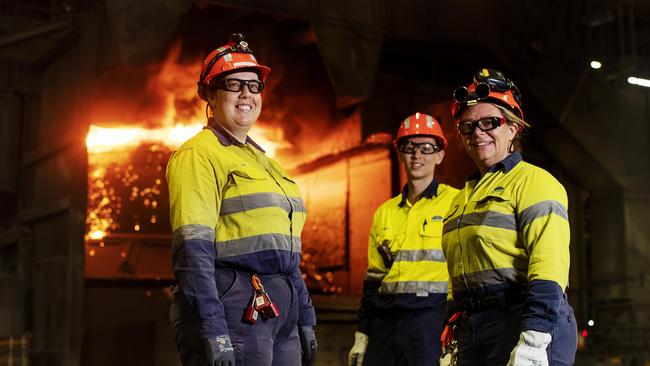Bluescope in sweet spot to deliver green steel transition

Investors could take a subdued look at the Illawarra-based global steel producer. After record profits in August, guidance of $800m to $900m of underlying earnings for the first half of the financial year was confirmed, largely reflecting the slowing global economy.
The other view is that BlueScope sits in a sweet spot, looking ahead to a long pipeline of construction in defence and in housing in the US and Australia, and that energy transition will be a gift that keeps on giving. BlueScope chief executive Mark Vassella has quite an agenda in front of him.
The company’s chairman John Bevan, told shareholders on Tuesday that BlueScope was uniquely positioned to grow and deliver as “we enter the age of steel”.
Eventually that will be an age of green steel with solar and wind energy powering a process where hydrogen and not carbon combines with iron to make steel.
But for the near term it is infrastructure made from the current steel, both blast furnace and electric arc furnaces – fed by scrap – that the market needs for exactly that energy transition.
At a conference in Sydney on Tuesday Origin chief executive Frank Calabria laid out the challenge. By 2030 there will be $76bn in infrastructure invested in Australia or 3 per cent of GDP.
To hit the Albanese government’s 82 per cent targets, 44GW of renewables need to be built of which 28GW will be utility-scale assets. Calabria says this is the equivalent of 110 projects of 250MW. The average wind turbine is around 2.5MW to 3MW. More than half of BlueScope’s revenue comes from the US but the market is rather different.
In America, steel demand is driven by housing and the auto industry. Steel is produced in electric arc furnaces using scrap and far lower emissions.
In Australia, energy transition and defence are more interesting avenues for growth.
Take the components for the solar industry and the new population of wind turbines for the NSW government’s five renewable energy zones.
So far the wind turbines dotted across Australia have been entirely imported from overseas.
There are only two established wind farm fabricators in the country servicing the southern states, Keppel Prince in Portland, Victoria, and Crisp Bros & Heywards in Tasmania. But transporting these giant windmills any distance is prohibitive.
BlueScope is looking for a local fabricator to build the huge number of turbines that NSW Treasurer Matt Kean would like for the renewable energy zones.
Local manufacturing translates to tens of thousands of steel plates for BlueScope which is talking to both local and international players. Timelines extend from today to well beyond 2030 when more offshore wind is planned.
In March when the NSW government announced its $250m Renewable Manufacturing Fund, Vassella talked up the opportunity for local manufacturers to supply the REZs, if only the capability was there. “Several hundred thousand tonnes of steel, around $1.5bn of fabricated products, and almost 20,000 jobs. That means Australian-made wind towers, solar farm structures, transmission infrastructure and pipes for pumped hydro – all contributing to our nation’s net zero target,” he said.
Also in March a federal grant supported investment in an advanced manufacturing precinct at Port Kembla by BlueScope with partners Keppel Prince and the University of Wollongong.
The race for renewable infrastructure is global and getting tighter as Transgrid chief executive Brett Redman told The Australian on Monday. He was just back from a trip to the UK to lock in supply for his vast transmission rollout, and said competition for the billions of dollars in capital required was real. So too is competition for labour and materials as countries race to build networks.
Last year BlueScope announced plans for a pilot-scale 10MW hydrogen electrolyser with Shell and Rio Tinto to be part of a hydrogen hub for Port Kembla. In August Shell moved back to a supporting rather than lead partner, a sign that priorities can and will shift as transition plays out.
For all hype around hydrogen and green steel, it is the infrastructure build to connect renewable energy that is happening in real time. Like many manufacturers, BlueScope accepts that green steel production is still decades away.
This is why Vassella needs to spend $1bn on a bridge to the future – the relining of a blast furnace mothballed in 2011 when the steel export market collapsed.
What was old is new again to deliver on energy transition.






BlueScope Steel shares finished up almost 5 per cent after the company’s annual meeting.